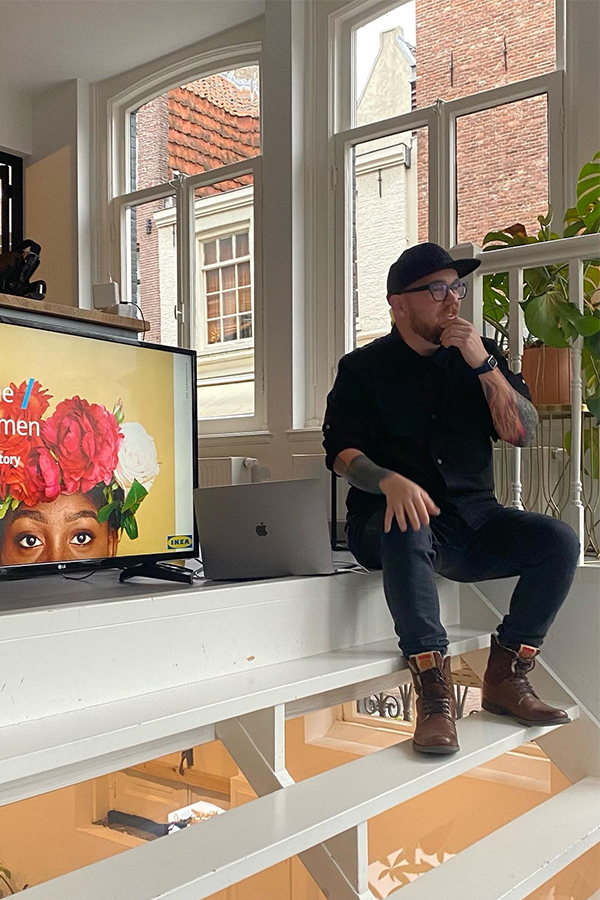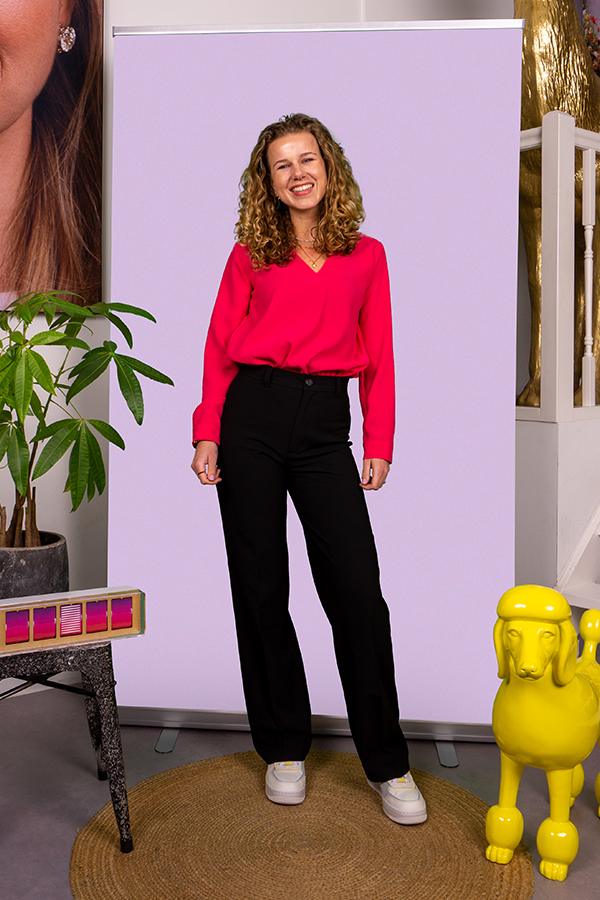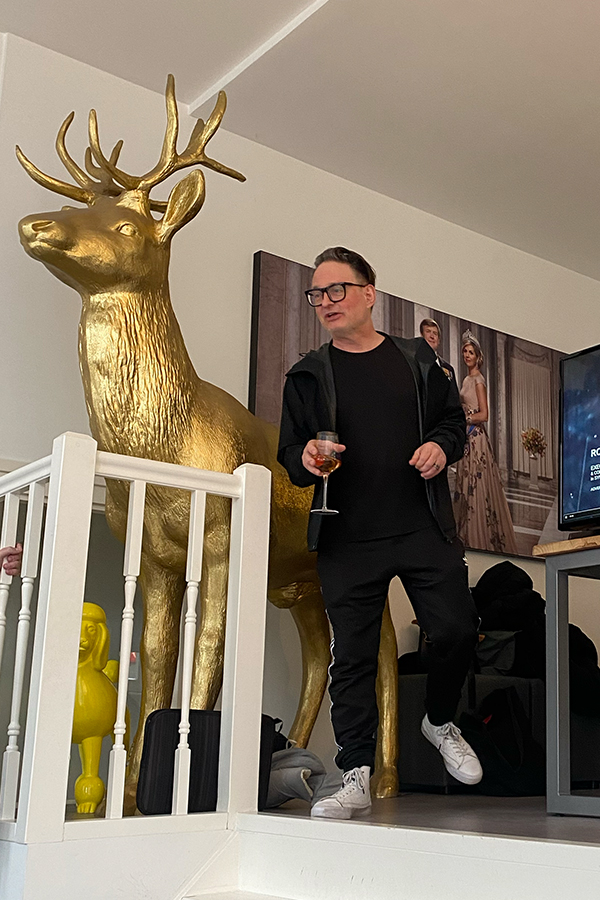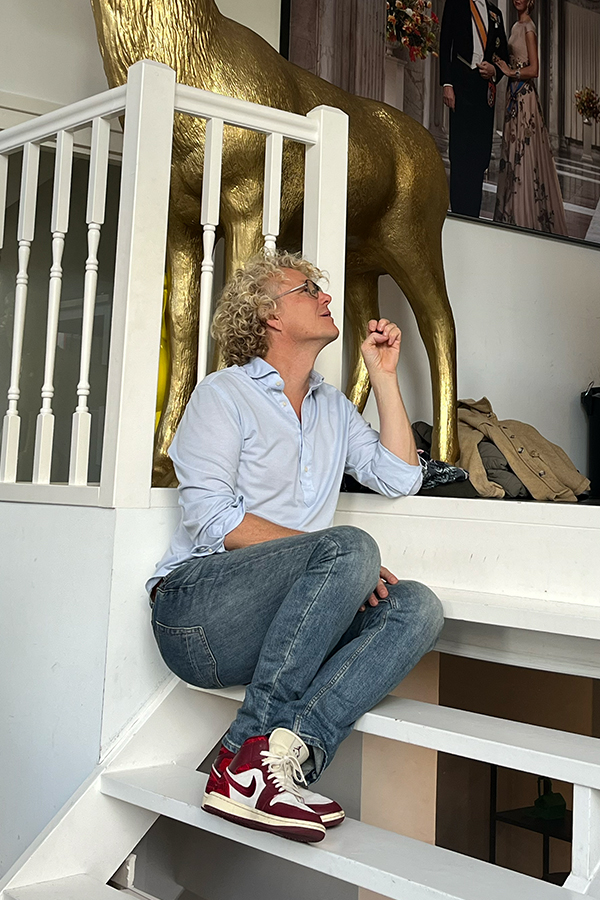
An enthusiastic team player who is not afraid to ask the questions that need to be addressed. Actively delivering ambitious projects effectively from start to finish. Niki quickly built up a broad-ranging experience working at digital creative agency Lama Lama and also for DDMA, the largest trade association for marketing and data. Having led to knowledge and understanding of design, search, social media, social platforms and the inner workings of digital platforms. Before working hours you can find Niki sparring in the boxing ring or experiencing total inner silence on her yoga mat.

This week Eelko enlighted us with a transformational journey, learnings and insights into Ikea’s UX-team structure and practices. Climate protection and embracing sustainability. And Ikea’s culture and recruitment process. ’A lot of brands are about the customer journey, right? It’s the journey, journey mapping, all of these different touch points, and all of that, in a sense, it’s great. But it’s not about the journey because journeys are only how you move, but it’s the experience you actually remember, not the journey. And from that perspective, IKEA is rapidly maturing towards that.’’

Social Media Manager, endlessly curious to help brands venture down paths unexplored
Mover and shaker on social. Iman combines his education in cross-media communication with a passion for social-first creativity to help brands progress. Iman graduated at Hogeschool Inholland before managing the communities on social platforms at Bol. At big AMS Iman heads up the social management team with a laser focus on guiding bold ideas towards reality. If you meet Iman you can immediately start talking about soccer (Ajax!) , the entire Hazes repertoire, vinyl, where you can buy the best coffee beans and his kitten Momo.

Priscilla lands at big Amsterdam with limited experience but with a truckload of talent. She eats social and search analytics for breakfast, creates content for lunch and manages communities for dinner. At big she is part of the content & social team with a laser focus on the organisation, production and analytics of all always-on-content.

This Thursday’s big talk, Rodger (AI nerd and member of the Commordore 64 Gen) preached at a dizzying pace the advantages and possible effects on the marketing profession. Accompanied by a fascinating wave of examples with Midjourney, Dall-E, ChatGPT. One prompt to sketch three concepts in three minutes. What you throw in determines the outcome. Just like every briefing. An extra tool to do your work faster, making top execution more accessible. But a real Van Gogh will always retain the most value. If you rely solely on algorithms, the result will be gray. You ain’t seen nothing yet.

An inspiring insight into the state-of-the-art messaging options with smart devices. From shoppable tv-ads (CTV) to innovative service tooling. Footfall attribution, hyper local targeting. Great examples: helping golfers to reach their full potential on the golf course, branded race games and how to engage and add value for Dutch people driving through France for the ANWB, Making one thing crystal clear (again): it’s 80% idea, 80% execution. The mobile devil is in the details. Thanks, guys. Up to the next big Talk.

Bridget started her graphic design journey at Grafisch Lyceum Rotterdam and Signcraft, before trading the shores of the Port of Rotterdam for the canals of Amsterdam. Bridget always looks for stories beneath the surface, because she has one ambition: to express stories in one visual. Nijntje (Miffy) by Dick Bruna is her daily inspiration. At big Bridget is helping to realise creative design with both punch and class.
The human world is one of organised expectation, with codified systems and procedures designed and developed to remove risk. But some of the greatest discoveries and inventions of all time have been a result of random events and serendipitous circumstances. Like evolutionary leaps, it’s often the unexpected that drives us towards new frontiers.
First coined by English writer Horace Walpole in 1754, ‘Serendipity’ describes an unplanned yet fortunate discovery: ‘of things which they were not in quest of’, as Walpole wrote. The list of inventions that were stumbled upon by chance is long and significant: The Post-It Note, Viagra, In-vitro fertilization, the gramophone, x-rays, Penicillin, the microwave, Champagne, smear tests and the humble tea bag to name but a few. What they have in common is that they were not the results that their discoverers were looking for, but their inventors were smart enough to realise that something extraordinary had happened – something serendipitous.

The art of finding the unsought depends on the ability to notice something unexpected or strange, and the cleverness or creativity of contextualizing this unexpected result. Todays world leaves little to the imagination, with algorithmic certainty removing the element of chance and reducing it to the lowest common denominator. Many brands leave little room for unsought discoveries, regardless of ring-fenced Innovation Budgets. The daily hurricane of category, competition and commerce whirls on without genuine innovation, let alone unsought finds.
Behind this lies the power of corporate culture, where to a man with a hammer, everything looks like a nail. Nothing is interesting if there’s no reward in seeing differently, reasoning differently. Nothing makes us feel old like not thinking, not putting our brains to work. Our brains don’t wear out, they simply rust away. The broader our interests, the more intensely we live. To maintain forward momentum and take advantage of the random events of a random world, the role of serendipity should not be underestimated. Room should be made for serendipity within a corporate culture to take advantage of controlled chance.
We can apply pressure, set deadlines, nail mission statements to our front doors or focus until it all becomes a blur, but the genuine advances often come from different places. In the digital world, filtering by relevance is increasingly necessary to prevent our brains short-circuiting from choice overload. It has led to our experiences becoming more and more like cooking ramen – pre-processed. Just add hot water and stir. Technology gives us what we want with minimal effort, but what are we missing outside our own invisible bubble of algorithmic filters? The ideas.
In Neuromancer, written by William Gibson in 1984, people instal a neural implant to receive direct sensory experiences. Neural lace is a mesh that grows in the brain and provides what you want, just like Google has inveigled itself into the fabric of lives. We use it to find information and verify news, connect with friends, increase productivity and locate ourselves in the physical and virtual worlds. And with the data it collects on us, it has an extraordinary ambition: the tracker of our activities wants to become the catalyst and director of our dreams. Our neural lace.
The improvements to recommendation algorithms have led to more accuracy, but they come at the cost of the missed opportunities that fall outside our narrow options. When a product suggestion is positive, unexpected and involves a certain amount of chance, it generates a congruent feeling of ‘flow’, of serendipity and increased pleasure. Because we love to discover things for ourselves, satisfaction can be significantly increased if a customer is exposed to a new, unexpected product recommendation. That is the power of serendipity.
Serendipity in its purest form may not be reproducible in the digital space. Once people start ‘choosing’ serendipity (e.g. always picking shuffle on Spotify), are their experiences truly accidental? Perhaps it’s time for brands to think beyond the bubble of ‘immediate relevance’ and experiment with ‘controlled serendipity’.
Most recommendation engines are designed for accuracy and bought ‘off the shelf’. From a customer satisfaction viewpoint, refined accuracy is unlikely to reduce satisfaction because you’re not aware of what you’re missing. Our expectations are managed to increase our satisfaction, but all within a bubble.
Serendipity can be valuable in ensuring users are exposed to as many different and commercially relevant experiences as possible in a crowded marketplace, where brands can only grow by engaging new users through unique, memorable, and unexpected experiences. It’s time for brands to consider the anti-serendipity bias within their core business and ask, ‘What’s our Serendipity Strategy’?
When we went into the first lockdown, many brands (even those without a self-proclaimed ‘purpose’) actually helped consumers, adding a layer of emotional intelligence and human empathy to their existing metrics of measurability and accountability.
There is a tremendous commercial opportunity for brands and marketers to differentiate by exploring the unsought, by curating serendipity. And on a personal level, to break out of our comfort zones. Talk to strangers, travel alone, break the routine, forget about the algorithmic self-righteousness of social networks, visit places you have no interest in visiting. You never know; Serendipity may find you when you least expect it.